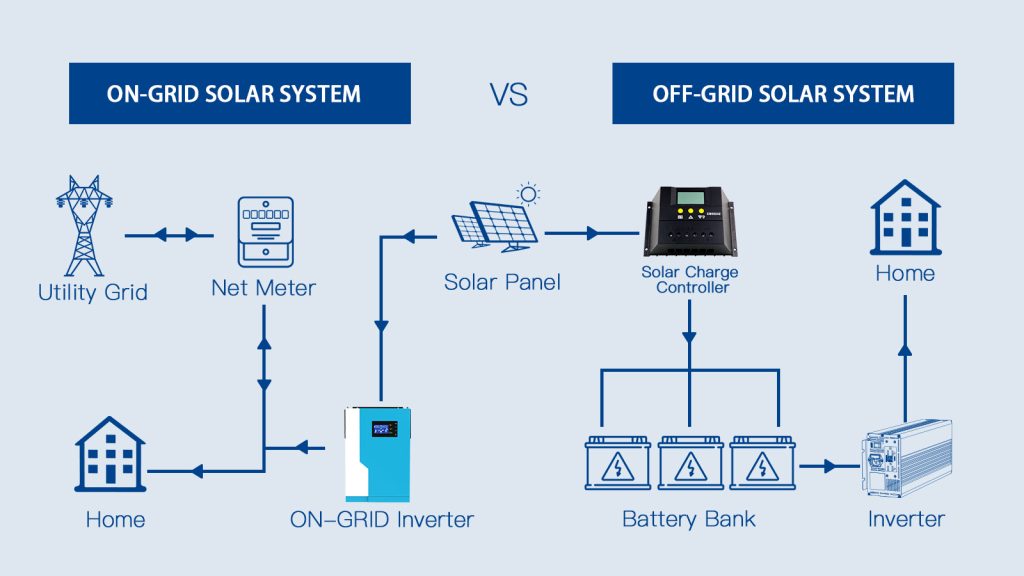Call us +234 704 100 5200
Grid-Tied vs. Off-Grid Solar Systems: Which Is Right for You?
Introduction As solar power adoption grows across Nigeria, understanding system configurations is critical. Two common types—grid-tied and off-grid—offer different benefits. This guide helps homeowners and SMEs decide which setup best suits their energy needs and location.
Overview of System Types – Grid-Tied: Connected to the public utility; allows users to import and export electricity. – Off-Grid: Completely independent, powered by solar and battery storage. – Hybrid: Combines both with an inverter and battery for flexibility.
Pros and Cons Grid-Tied Systems – Pros: Lower cost, potential for energy export – Cons: No power during outages
Off-Grid Systems – Pros: Total independence, no utility bills – Cons: High upfront cost, battery replacement required
Hybrid Systems – Pros: Reliable power, combines energy export and backup – Cons: Higher system complexity and costcriptive enough to keep readers engaged. This is where the substance of your article begins to take shape.

Nigerian Context – Over 85 million Nigerians lack reliable grid access. – Urban homes face frequent outages, making backup power essential. – Hybrid systems are becoming popular in Lagos, Abuja, and Kano due to flexibility.
Cost and Financing – Off-grid/hybrid systems are 2–3x more expensive than grid-tied but offer autonomy. – Financing options include PAYGO, cooperative models, and bank loans. – The World Bank supports programs benefiting 17.5M Nigerians with solar solutions.
Making the Right Choice – Evaluate your location’s grid reliability. – Assess backup needs and budget. – Compare lifetime costs, not just upfront price. – Consider future scalability and system expansion.Conclusion Your ideal solar setup depends on your location, energy habits, and resilience goals. Grid-tied suits areas with stable supply, off-grid fits rural or remote homes, while hybrids serve most urban users best by blending efficiency with reliability.

